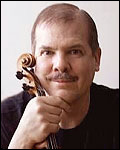During his sixteen-year association with Bein & Fushi in Chicago, violin maker Michael Darnton had the opportunity to examine, photograph, and measure hundreds of Classical Period violins. He’s been a Guild member for a total of twenty-seven years, and is a past GAL columnist and convention speaker.


